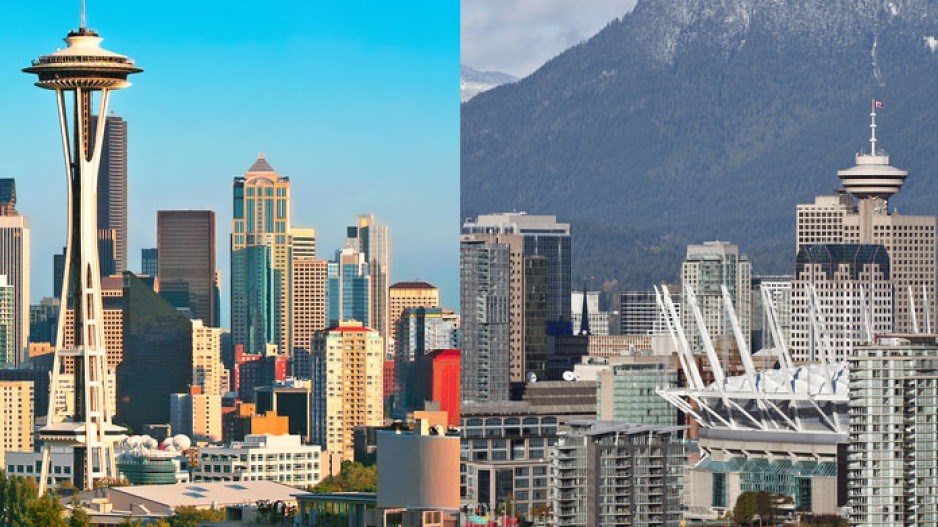Space squeeze
Vancouver is Canada’s biggest and busiest port, yet Jones Lang LaSalle’s (JLL) most recent Seaport Outlook ranked it the Northwest’s second port after Tacoma, now managed jointly with Seattle through the Northwest Seaport Alliance.
Working in the alliance’s favour is 199.9 million square feet of industrial space within 24 kilometres (15 miles) of its port properties. Vancouver, by contrast, has just 77.6 million square feet and limited scope for expansion. Space is tight, limiting what can be done.
But it’s not just the industrial inventory that’s limited.
A reader pointed out that Vancouver has a general lack of so-called jobs space when considered on a per capita basis.
CBRE Ltd. kindly crunched the numbers for Business in Vancouver, and reports that Vancouver’s office and industrial inventory lags behind what the Seattle-Tacoma area offers, whether one considers population or regional employment.
Greater Seattle has more than twice the office space of Metro Vancouver, while its industrial inventory is more than 40% greater. This works out to 100.6 square feet of jobs space per capita in the Seattle area versus 91.7 square feet per Metro Vancouver resident.
The difference is even greater when calculated per worker. Seattle workers have approximately 184 square feet each, while Vancouver workers animate an average of 165.4 square feet each.
Sure, vacancies in Vancouver may be tighter, but the extra space in Seattle-Tacoma gives tenants options they simply don’t have here (a factor in JLL’s ranking of Tacoma). This means a greater chance that companies will locate there, bringing the high-paying jobs that Vancouver – while offering investors irreplaceable properties that are likely to retain their value – simply can’t house.
Granville shuffle
Cushman & Wakefield Ltd. is brimming with optimism about the future of retail space in Metro Vancouver, but if the sunny skies have a cloud it’s very likely hovering over Granville Street.
Retail spending was up 7% last year in B.C., the brokerage’s latest report on retail space says, thanks in part to cross-border shoppers staying home and new options being brought to market around the Lower Mainland.
“[It’s] been a good year for the retail market in Metro Vancouver,” the report says. “Mixed-use developments are still in high demand from both developers and residents alike.”
Colliers International reports that private capital is also pouring into the market, scooping up available retail assets as the long-term outlook for the sector is positive. Total investment transactions in 2015 totalled $1.2 billion.
But on Granville Street, rents are facing downward pressure.
Downtown, lower-end rents dropped from $40 a square foot in 2014 to $35 a square foot in 2015. Across the bridge, between Broadway and West 16th, the upper end took a hit, dropping $10 over the same period to $80 a square foot.
Meanwhile, Main Street rents tightened their range to $30 to $45 a square foot, while all other markets held steady – a sign that overall conditions remain firm despite local variations.
Out and about
Travels through Washington state and Oregon in recent weeks have underscored the renewed optimism in U.S. real estate circles, noted in last fall’s Emerging Trends in Real Estate report from the Urban Land Institute and PricewaterhouseCoopers. Redevelopment of retail assets, talk about Chinese capital looking for a home and dinner in a Portland restaurant smack dab in the centre of 5,000 new condo-dwellers made it seem very much like home. •




